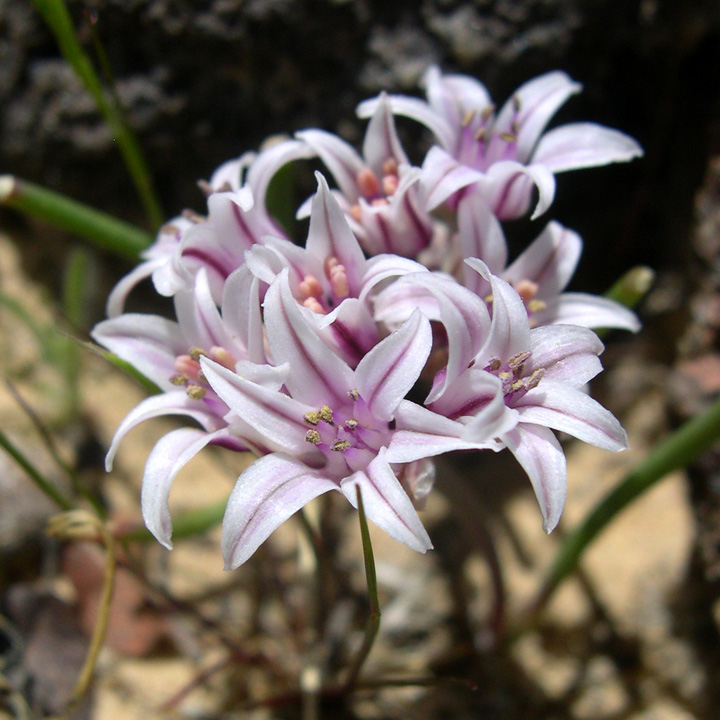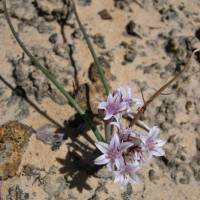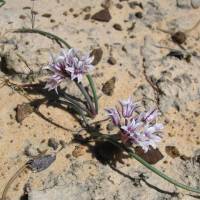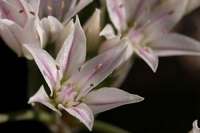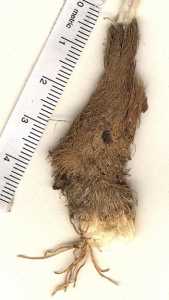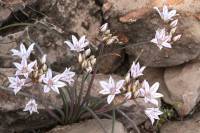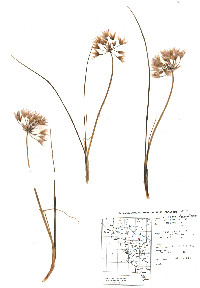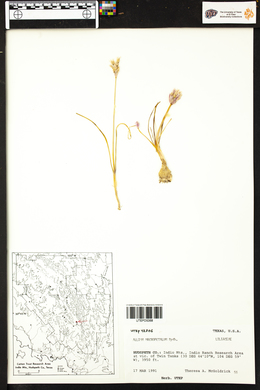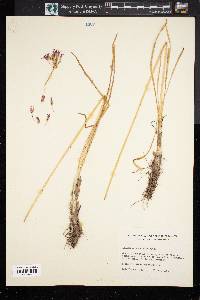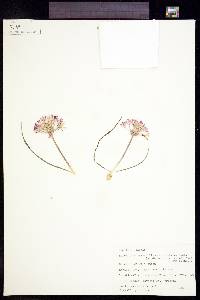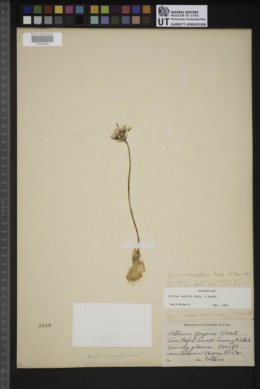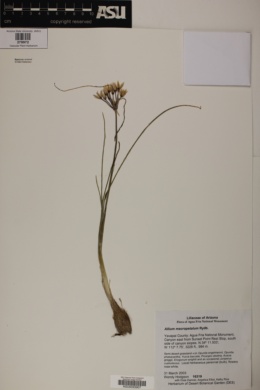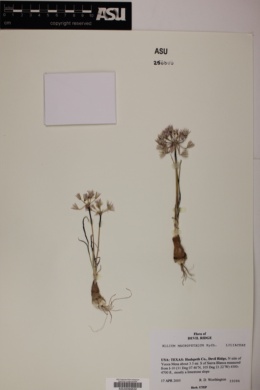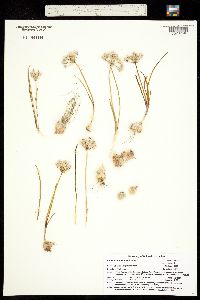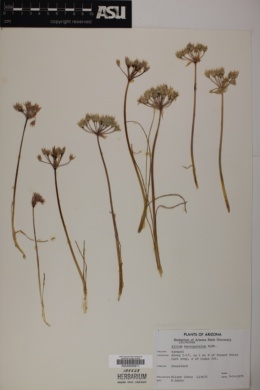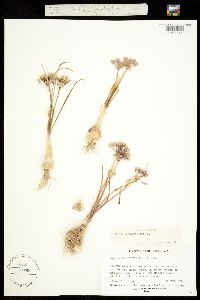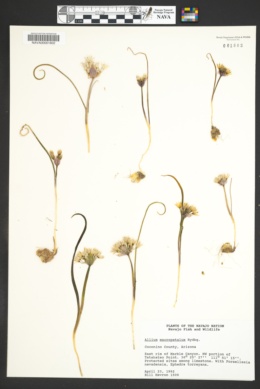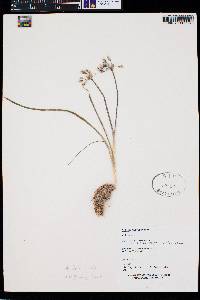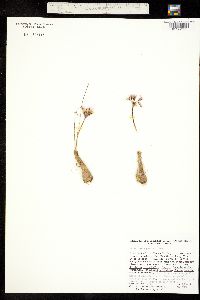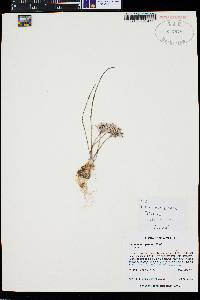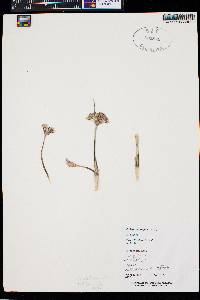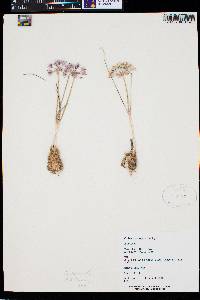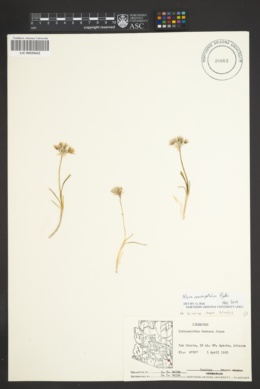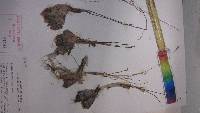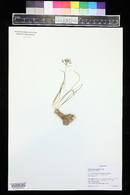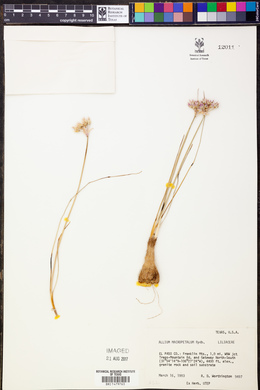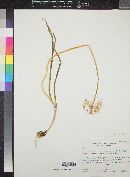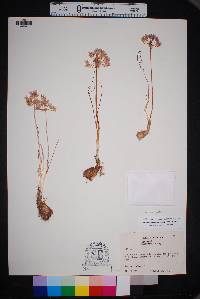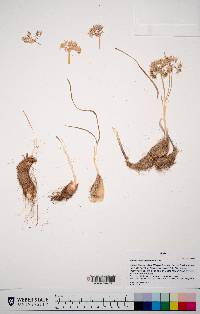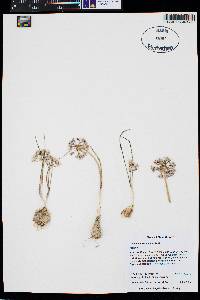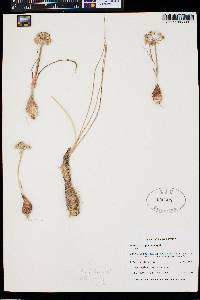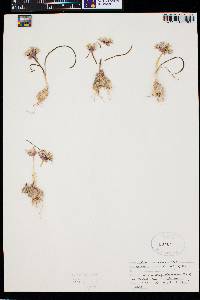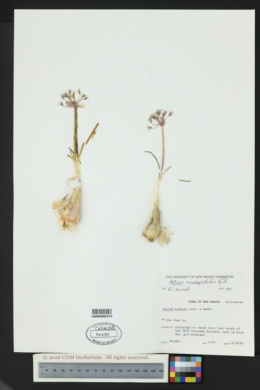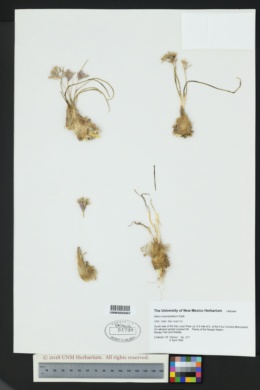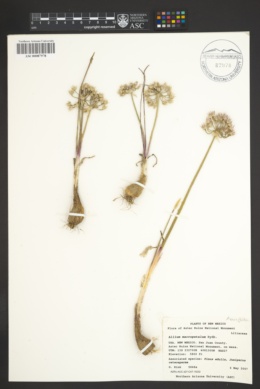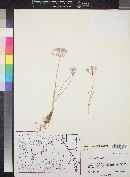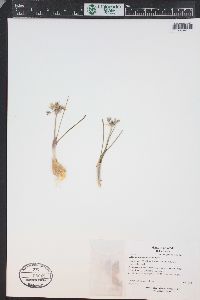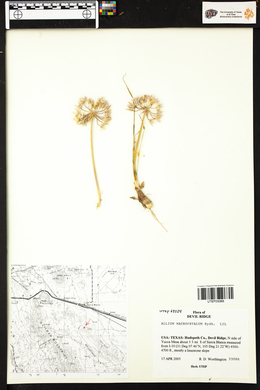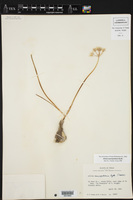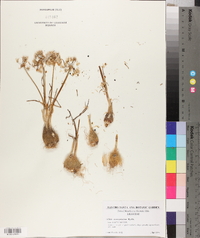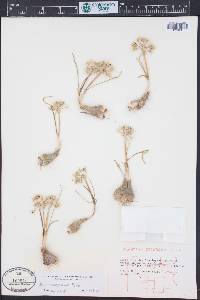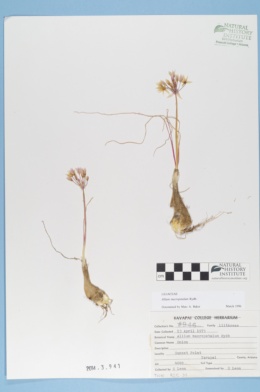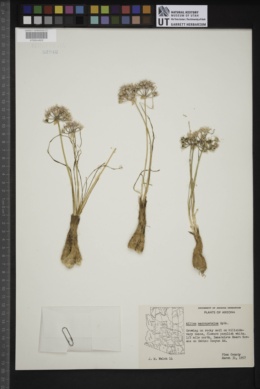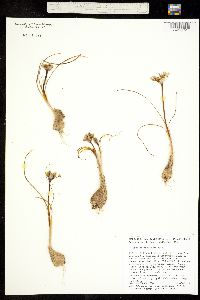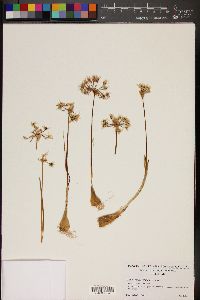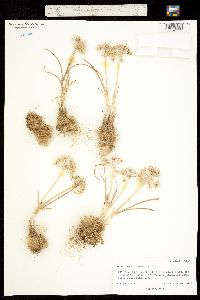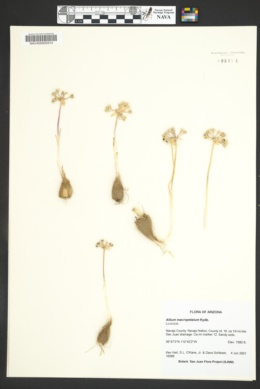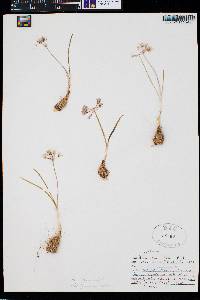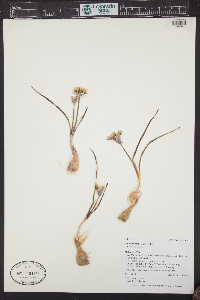Allium macropetalum
|
|
|
|
Family: Amaryllidaceae
Large-Petal Onion, more...largeflower onion, wild onion, largeflower wild onion (es: cebollin)
[Allium reticulatum var. deserticola] |
Bulbs 1-5, without basal bulbels, ovoid, 1.5-2.5 × 1-2 cm; outer coats enclosing 1 or more bulbs, brown, reticulate, cells usually coarse-meshed, open, fibrous; inner coats whitish, cells vertically elongate and regular or obscure. Leaves persistent, green at anthesis, 2, sheathing; blade solid, channeled, semiterete, 8-20 cm × 1-3 mm, margins entire. Scape persistent, solitary, erect, terete or ± 4-angled, 5-20 cm × 1-4 mm. Umbel persistent, erect, compact to loose, 10-20-flowered, hemispheric to globose, bulbils unknown; spathe bracts persistent, 2-3, 3-5-veined, ovate to lanceolate, ± equal, apex acute to short-acuminate. Flowers campanulate, 8-12 mm; tepals spreading, pink with deeper pink or reddish midveins, lanceolate, ± equal, becoming papery in fruit, not investing capsule, margins entire, apex obtuse to acuminate, midrib scarcely thickened; stamens included; anthers yellow or purple; pollen yellow; ovary usually conspicuously crested; processes 6, central, usually connate in pairs across septa, ± erect, flattened, triangular, to 2 mm, margins entire, mostly well developed in fruit; style linear, equaling stamens; stigma capitate, unlobed or obscurely lobed; pedicel 5-20 mm. Seed coat shining; cells smooth, without central papillae. 2n = 14. Flowering late Mar--Jun. Desert plains and hills; 300--2500 m; Ariz., Colo., N.Mex., Utah, Tex. FNA 2002, Wiggins 1964, Kearney and Peebles 1969 Duration: Perennial Nativity: Native Lifeform: Forb/Herb General: Herbaceous perennial monocot from clusters of 1-5 ovoid, long-necked bulbs, these often deep, up to 15 cm below soil surface; bulb outer coats fibrous, brown, inner coats white, thin; stems scapose, to 20 cm tall. Leaves: Persistent, green, usually 2 per bulb and longer than the stem; blades sheathing and solid (i.e. not hollow), semiterete and channeled, 8-20 cm long by 1-3 mm wide, with entire margins. Flowers: Pinkish, in erect, hemispheric to globose umbels (inflorescences with an umbrella-like structure) with 10-20 flowers; subtending the umbel are 2-3 spathe-like bracts: bracts persistent, 3-5 veined, ovate to lanceolate, more or less equal, with an acute apex; flowers bell-shaped, 8-12 mm, with 6 spreading leanceolate tepals (petal-like shructures), these white-pink with deeper pink or reddish midveins, becoming papery in fruit. Fruits: Conspicuously crested capsule. Ecology: Found in heavy soils, often found among rocks, from 1,000-7,000 ft (305-2134 m); flowers March-May. Distribution: From the northern Colorado Plateau in UT and CO, south to AZ and east to TX. Notes: In the lower desert this is a fairly widespread species, often blanketing the ground in the springtime. Distinctive with its onion smell; linear, onion/grass-like basal leaves which are longer than the flowering stalk but still relatively short (up to 20 cm); bulbs covered in a thick, brown, fibrous sheath; and flowers with 6 whitish petals (tepals) with deep reddish/pink midveins. The genus Allium has previously been placed in Liliaceae and Alliaceae; currently it is considered part of Amaryllidaceae. Ethnobotany: Leaves, flowers, and bulbs eaten fresh. Bulbs cooked with other food, or stored for winter use. Etymology: Allium is Latin for garlic; macropetalum means with large petals. Synonyms: None Editor: SBuckley 2010, FSCoburn 2014, AHazelton 2015, 2017 |

